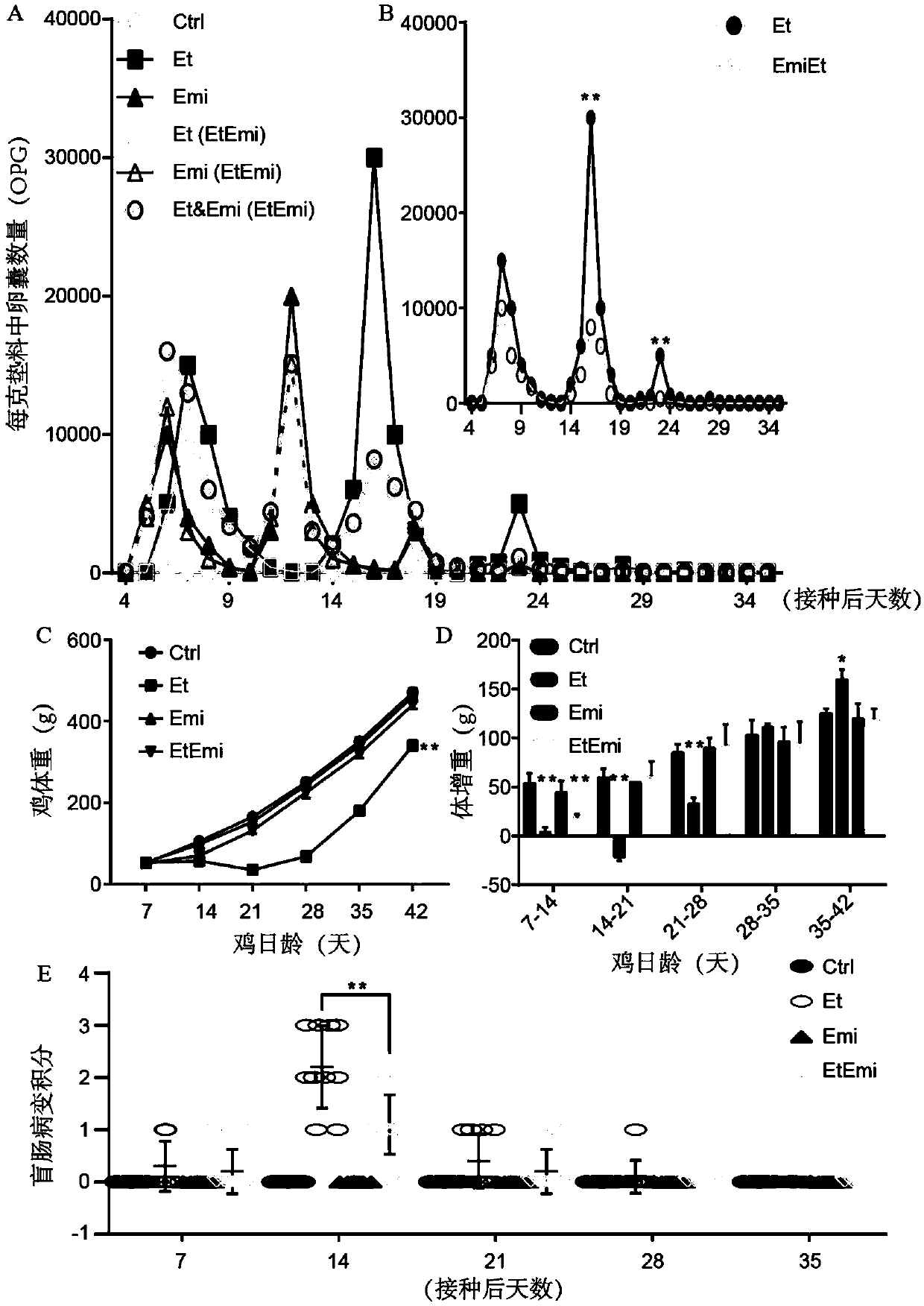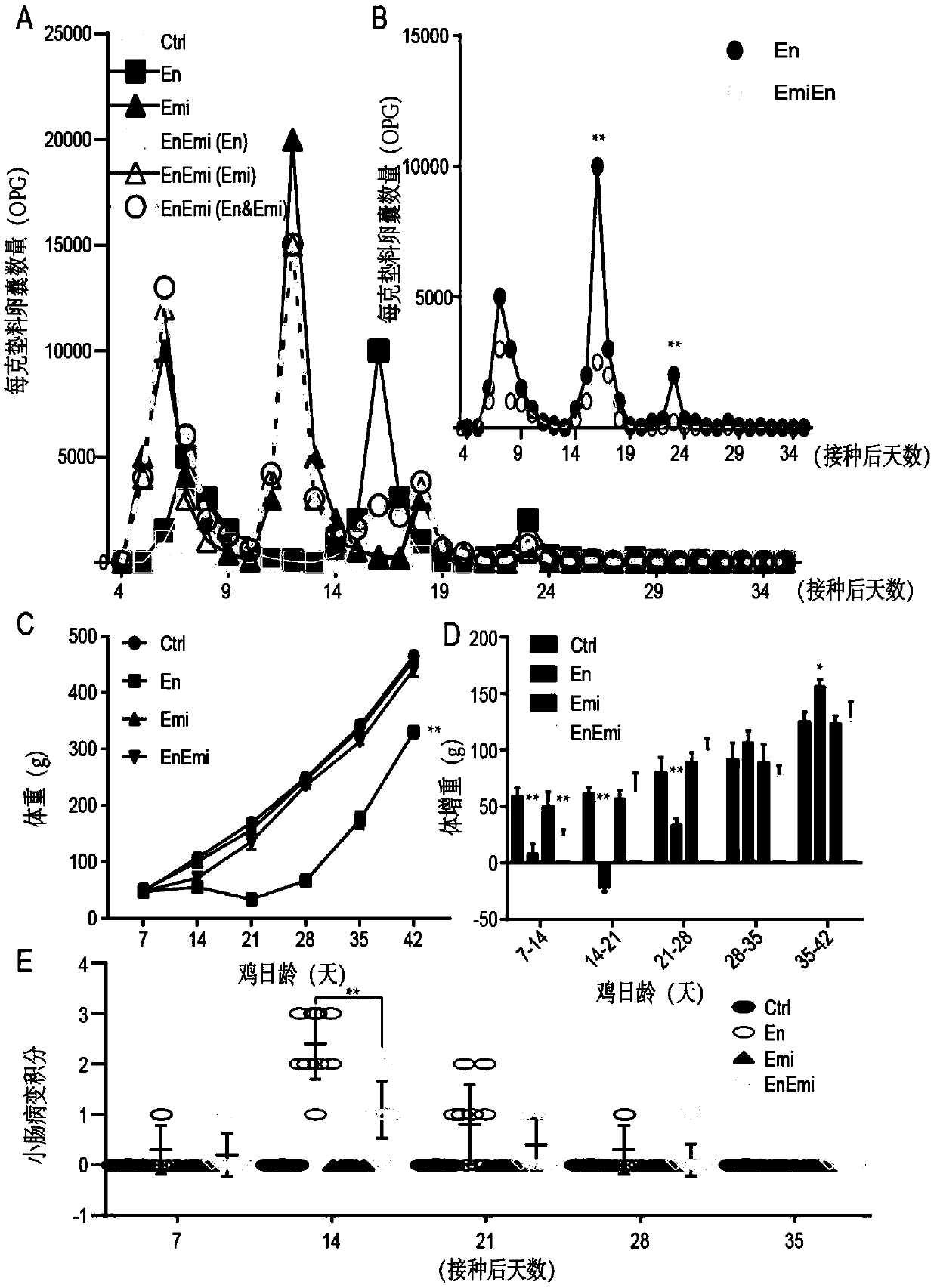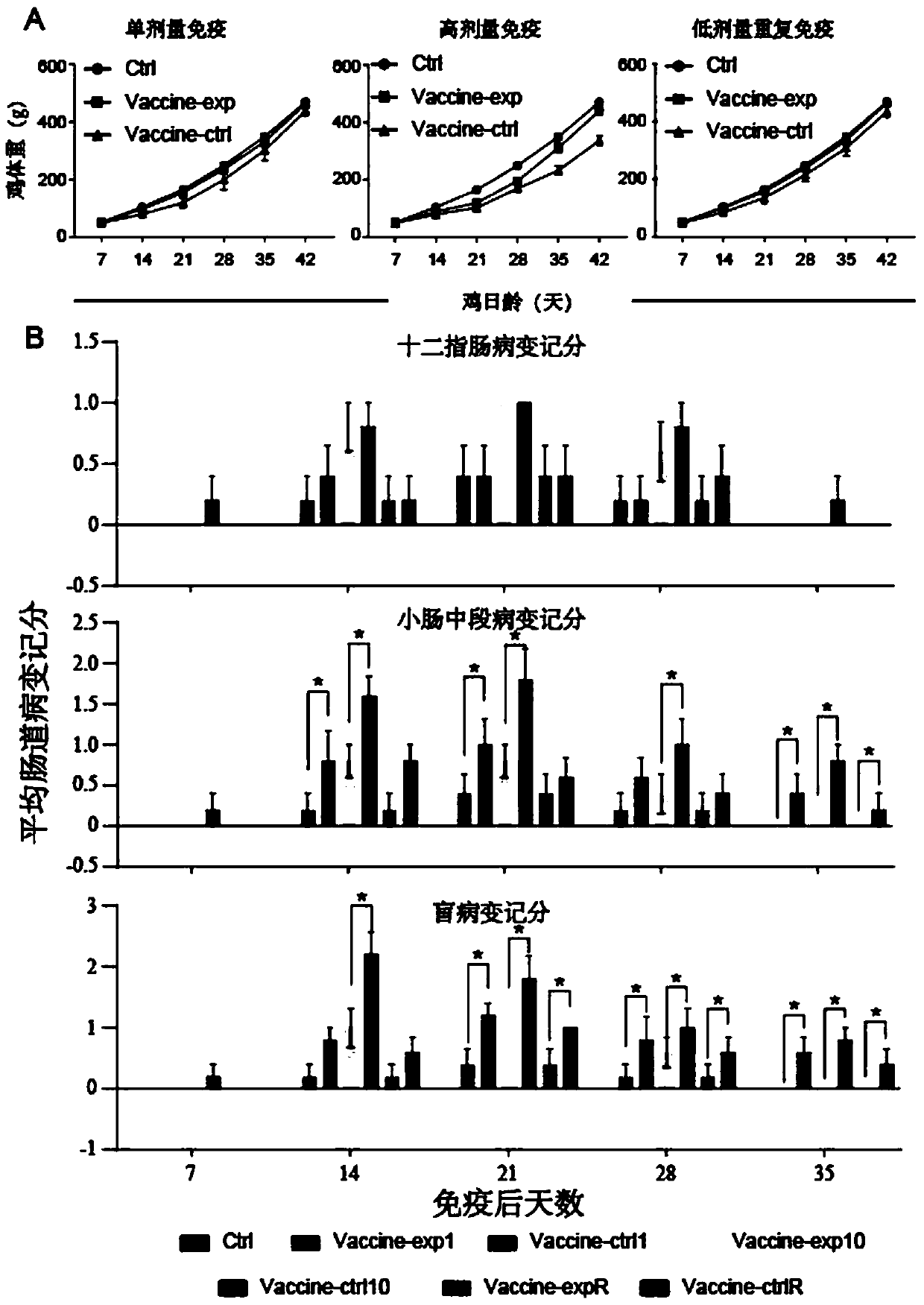Live coccidiosis vaccine and application thereof
A coccidiosis and vaccine technology, applied in the field of livestock and poultry disease prevention and control, can solve problems such as continuous use for 2-3 days in about 10 days, restrictions on the promotion and use of coccidiosis vaccines in chickens, and the inability to compensate for weight before slaughtering, etc. Achieve the effect of maintaining immune efficacy, good immune protection, and reducing fecundity
- Summary
- Abstract
- Description
- Claims
- Application Information
AI Technical Summary
Problems solved by technology
Method used
Image
Examples
Embodiment 1
[0033] Example 1 Coccidia virulent strain and attenuated strain co-infection affect the pathogenicity of coccidia virulent strain 1
[0034] This embodiment takes Eimeria tenella, a highly pathogenic insect species commonly used in chicken coccidiosis vaccine components, as an example, using a high dose of Eimeria tenella that has the same parasitic site in the parasitic life history The weak pathogenic species of Eimeria tenella co-infected chickens with low doses of the highly pathogenic species of Eimeria tenella. The influence of Eimeria lentilis on the pathogenicity of Eimeria tenella was analyzed by oocyst excretion, detection of cecal lesions, and body weight changes.
[0035] 200 1-week-old SPF chickens were randomly divided into 4 groups: non-infected control group (Ctrl), Eimeria tenella-infected group (Et), Eimeria pallidum-infected group (Emi) and Eimeria tenella Coccidia infection group and Eimeria placida co-infection group (EtEmi). Each chicken of each of the ...
Embodiment 2
[0040] Embodiment 2 coccidia virulent strain and attenuated strain co-infection are to the impact of the pathogenicity of coccidia virulent strain 2
[0041] In this embodiment, the strong pathogenic insect species poisoning Eimeria (Eimeria atrix) commonly used in chicken coccidiosis vaccine components is taken as an example, and high-dose Eimeria coccidia and poisonous Eimeria coccidia have the same characteristics in the parasitic life cycle as examples. Chicken flocks were co-infected by the weak pathogenic species Eimeria pallidum and the low dose of strong pathogenic species Eimeria venom in the same parasitic site. The influence of Eimeria bradymis on the pathogenicity of Eimeria catarrh by oocyst excretion, detection of cecal lesions, and analysis of body weight changes.
[0042] 200 1-week-old SPF chickens were randomly divided into 4 groups: non-infected control group (Ctrl), poisonous Eimeria infection group (En), mild Eimeria infection group (Emi) and poisonous Eim...
Embodiment 3
[0047] Embodiment 3 chicken coccidiosis live vaccine and its immune effect analysis
[0048] The present embodiment provides a kind of live chicken coccidiosis vaccine, and its composition is as follows: Eimeria tenella 200 oocysts / feather part, pile type Eimeria 500 oocysts / feather part, Eimeria maxima 200 oocysts / feather, 1000 oocysts / feather for Eimeria mildew.
[0049] Present embodiment also provides the preparation method of above-mentioned chicken coccidiosis live vaccine, specifically as follows:
[0050] (1) Eimeria tenella Beijing strain, Eimeria heap type Eimeria Shandong strain, Eimeria giga Beijing strain and Eimeria placidus Zhuozhou strain were subcultured respectively through SPF chickens, and harvested feces Oocysts, aseptically processed after sporulation;
[0051] (2) Count each coccidia oocyst using a McMaster counting board, according to Eimeria tenacia oocysts: pile type Eimeria oocysts: Eimeria giant oocysts: mild Eimeria oocysts=2:5:2:10 ratio, and d...
PUM
 Login to View More
Login to View More Abstract
Description
Claims
Application Information
 Login to View More
Login to View More - R&D
- Intellectual Property
- Life Sciences
- Materials
- Tech Scout
- Unparalleled Data Quality
- Higher Quality Content
- 60% Fewer Hallucinations
Browse by: Latest US Patents, China's latest patents, Technical Efficacy Thesaurus, Application Domain, Technology Topic, Popular Technical Reports.
© 2025 PatSnap. All rights reserved.Legal|Privacy policy|Modern Slavery Act Transparency Statement|Sitemap|About US| Contact US: help@patsnap.com



